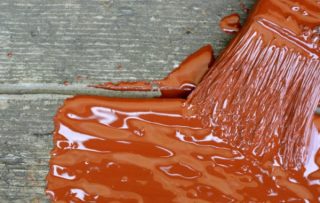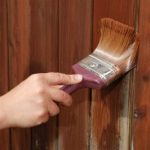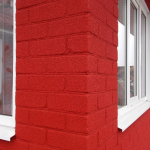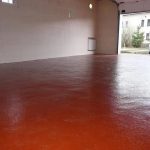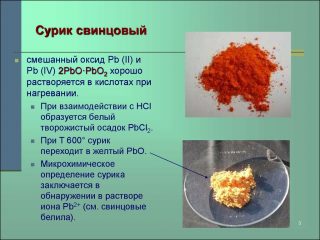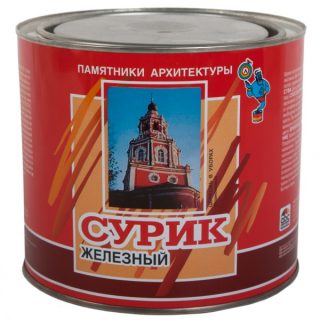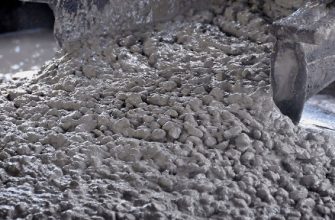Metal, wood and surfaces of other materials require treatment with coatings with protective functions. Red lead iron or lead - a durable substance that is part of paints, perfectly protects such surfaces from external factors. There are different types of paintwork, when choosing which you need to take into account their specifics.
What is red lead
Features and characteristics
To obtain a powder substance, red lead is treated with dry methods and calcined in an oxygen atmosphere at temperatures up to 600 degrees. After separation, the powder is filtered and mixed with the liquid substance.
Lead or iron ore may prevail in the composition of red lead... Both determine the parameters and purpose of the colorant.
Any red paint on metal or wood characterized by:
- resistance to temperatures from -50 to +60;
- the content of film-forming substances from 27%;
- viscosity from 80 to 160 at 20 degrees of heat;
- resistance to static action of water for at least 3 hours at a temperature of 20 degrees;
- mass fraction of volatile matter up to 14.5%;
- hiding power indicator up to 35 g per m²;
- pendulum hardness not less than 0.12 units.
Some formulations, due to the use of additional substances, may have increased resistance to various factors.
Scope of application
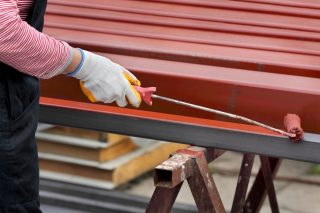
Suriks are used to paint various surfaces in order to:
- creating excellent anti-corrosion protection;
- priming wood, followed by painting with other materials to protect it from decay, mold and water;
- processing ceramic bricks to protect their shade and prevent soaking;
- processing of concrete products to give a beautiful appearance.
Red lead paint for wood and metal protects well against destructive processes.
Varieties of red lead paint
Lead-based
Lead red lead has a bright orange-red or light brown tint... For its production, red-hot lead is sprayed in the air or oxidized in special booths. Oxide is ground and packaged in bags and barrels.
The finished powder is added to paints, and also used for tinting plastic and rubber. It has the best anti-corrosion properties for application to objects operated in difficult conditions. In individual construction, it is almost never used due to high toxicity.
Iron based
After dilution, the paint acquires yellow-orange tint... It is used for coating pipelines, car bottoms, roofs and manholes. Also used for processing garages, heating equipment, wood, buildings. However, it is not used to protect wooden floors.
Paint color
The most common shades of red lead are brick, red-brown, ocher and yellowish-clay. The color depends on the addition of inorganic powder. This powder significantly enhances the anti-corrosion properties of the coating.

Among the natural pigments are also distinguished: chalk, cinnabar, umber, graphite, bauxite and pyrolusite.
Recommendations for use
The material will last much longer and more efficiently if applied correctly to the surface.
Surface preparation
Initial material before applying red lead cleaned from dirt, dust, traces of old paint and polished... Remove rust and degrease thinner, alcohol or other substance.
Dilution of paint
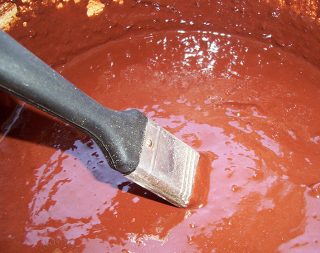
Before using red lead paint for metal and wood mixed with an organic solvent - drying oil... Add 80% dye and 20% drying oil. You need to mix in small portions to avoid the appearance of lumps. The finished paint should be moderately thick, oily.
You can adhere to the following technology:
- Red lead is poured with water for 24 hours.
- Drain the liquid and mix the composition thoroughly.
- Add a little drying oil.
- Leave for another couple of hours until the composition displaces the remaining water.
The easiest way to mix the paint is with a screwdriver with a nozzle or a mixer at low speeds.
Application rules
The tool is applied brush or roller. Large surfaces are easy to handle spray bottle. When using a lead substance, stir it as often as possible. When the work is completed, the tools are wiped with a solvent and a dry cloth. After cleansing, brushes can be soaked in vegetable oil.
Compliance with the application technology allows you to achieve a strong and durable coating that protects the material for at least 7-10 years.

